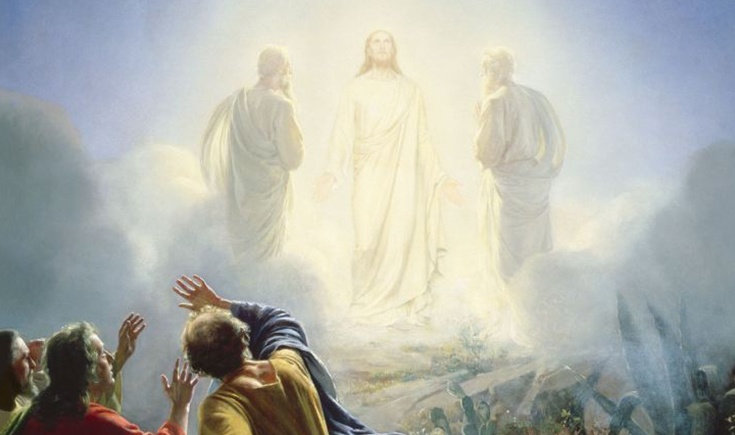
Today’s hymn from Sing Praise, continuing the theme of the Transfiguration, probably needs no introduction. Graham Kendrick’s “Shine, Jesus, Shine” may well be the best known hymn of the later 20th century, sung in churches of all traditions. What’s the secret of its success?
A jolly tune, for a start. The chorus in particular is fun to sing, indeed the hymn is better known by the opening words of the chorus than by the first verse (Lord, the light of your love is shining). It is belted out, with clapping, even by those who bring their children for christening but are not regular churchgoers. The image of Jesus “filling this land with the Father’s glory” and “flooding the nations with grace and mercy” is an appealing one.
What that means in practice is expanded by the words of the verses. The light is “shining in the midst of the darkness” (verse 1), echoing the familiar words of the Christmas Eve gospel. But in this verse we also ask Jesus to “set us free by the truth you now bring us”, recognising that we are in fact prisoners of our own darkness. Verse 2 recognises that we have to come out of those shadows into the Lord’s radiance, and that only by his blood (shed on the cross for the forgiveness of sin) can we enter it. We therefore asked to be “searched and tried” and for our darkness to be consumed. Trial is the language of judgement, and that is the hard part about turning to Jesus: accepting that our dark actions and thoughts deserve God’s judgement. As St John puts it, “people loved the darkness because their deeds were evil”.
The third verse tells an important truth about the faith. “As we gaze on your kingly brightness, so our faces display your likeness, ever changing from glory to glory”. The more time we spend with Jesus, the more we become like him, and the more we are not only living in the light but enlightening those around us. As more individuals are changed in this way, the land can indeed be filled with the Father’s glory – a glory shining not from the sky but from the faces of those who make up Jesus’ body on earth, just as his body shone at the transfiguration on the mountain. The sermon I’m preaching today (which I will post separately) has a similar theme.
So although the hymn may be popular because it’s fun to sing, it has a deeper story behind it, that the way Jesus will shine in our land is by individuals coming to him in repentance, and accepting his light into our own lives so that we may give light to others.
As Graham Kendrick tells it, the hymn began with verses only, and was a petition for purity (in much the same vein as Brian Doerksen’s “Purify my heart” (no 182 in the book)), and it gained its chorus when Graham was looking for a way of summarising the hymn by lifting one’s eyes to what it could be like if God fulfilled the petition. Many commentators have pointed out how the melody of the chorus takes up the same figure of the descending scale as other famous tunes (like The Beatles’ “She loves you, yeah, yeah, yeah” and so one).
Sadly, this hymn has been overused to the extent that many believers have got tired of singing it – but I think it’s still a great hymn, and rightly belongs in a book like this which aims to supplement other books (like Hymns Ancient & Modern) which don’t include it. I agree with Stephen’s prayer at the end of his post.